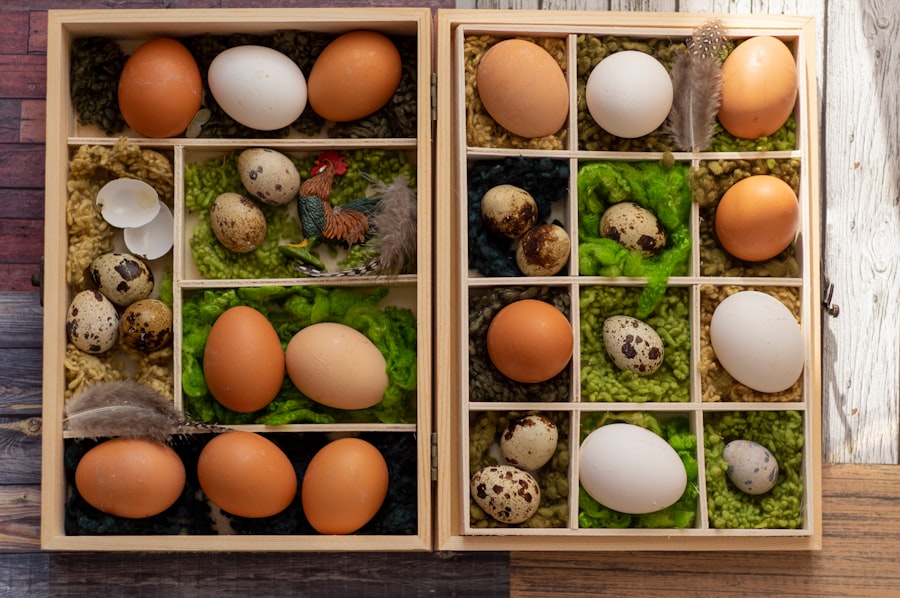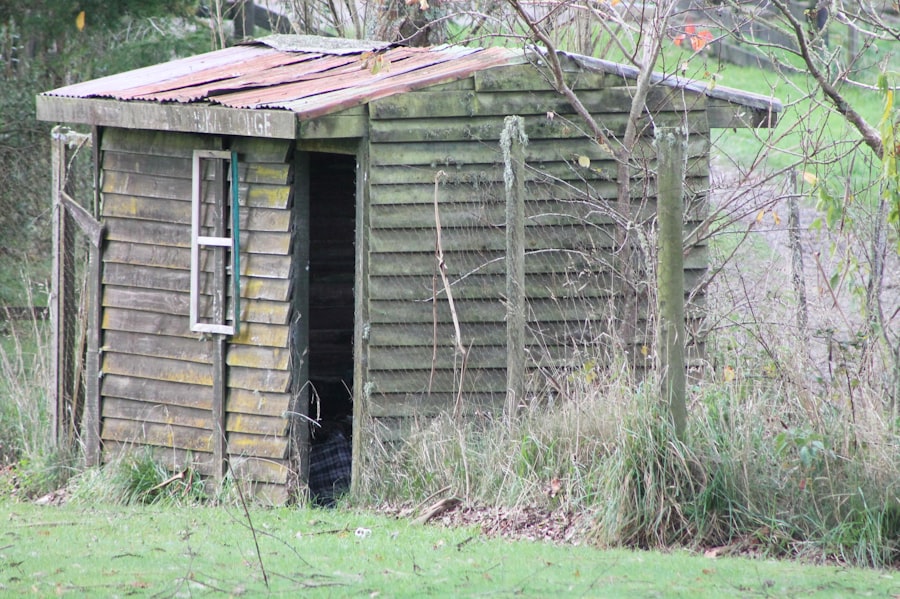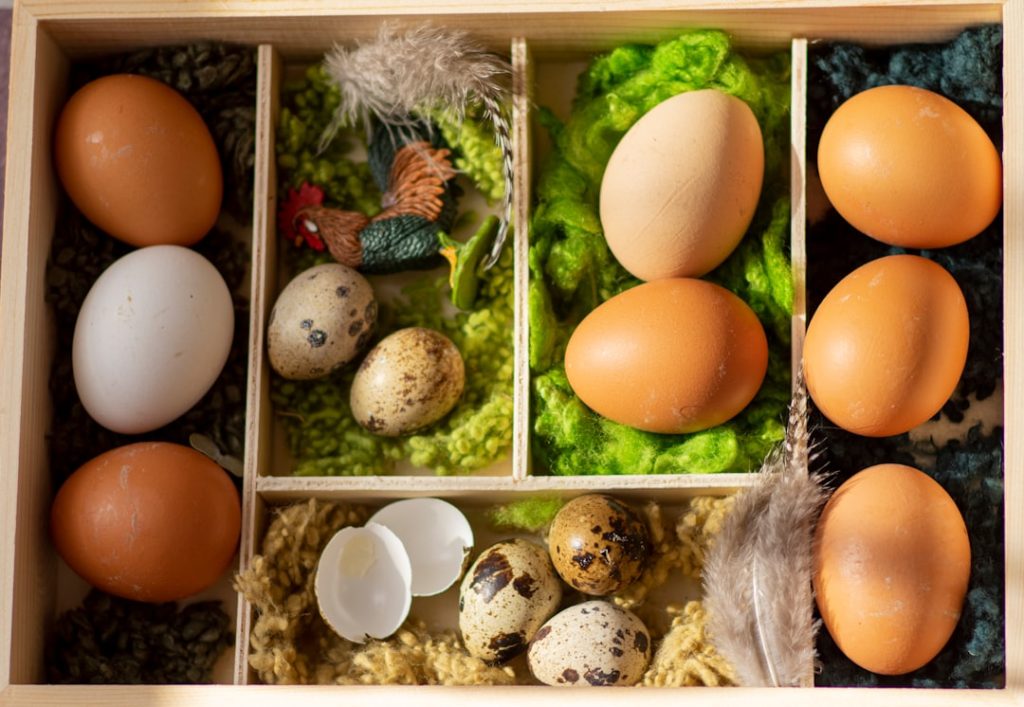Chickens have a natural inclination to roost, a behavior that provides them with a sense of safety and security. Roosting allows chickens to perch above ground level, away from potential predators. This instinct is crucial to consider when creating a suitable environment for chickens.
Typically, chickens prefer to roost at night, as it offers them a secure place to rest and sleep comfortably. Providing a roosting area that mimics their natural habitat is essential for ensuring the well-being and contentment of chickens. The social structure of chickens, known as the pecking order, influences their roosting behavior.
Dominant chickens often claim higher roosting positions, while more submissive individuals occupy lower spots. Understanding this social dynamic is important when designing a roosting area to prevent conflicts and ensure all chickens have access to comfortable roosting spaces. By considering the natural instincts and behaviors of chickens, owners can create a roosting environment that meets their needs and promotes harmony within the flock.
Table of Contents
- 1 Creating a comfortable roosting area
- 2 Using deterrents to discourage roosting in the door
- 3 Training chickens to roost in a designated area
- 4 Implementing regular checks and maintenance
- 5 Providing alternative roosting options
- 6 Seeking professional advice for persistent roosting issues
- 7 FAQs
- 7.1 What are the reasons for keeping chickens from roosting in the door?
- 7.2 What are some effective methods for keeping chickens from roosting in the door?
- 7.3 How can I discourage chickens from roosting in the door without harming them?
- 7.4 Are there any specific breeds of chickens that are more prone to roosting in the door?
Key Takeaways
- Chickens have natural roosting instincts and prefer to perch at night for safety and comfort
- A comfortable roosting area should be elevated, with enough space for each chicken and easy to clean
- Deterrents such as angled boards or spikes can discourage chickens from roosting in unwanted areas
- Training chickens to roost in a designated area can be done by gently guiding them to the roost at night
- Regular checks and maintenance of the roosting area are essential for the health and well-being of the chickens
- Providing alternative roosting options such as branches or platforms can help accommodate different preferences
- Seeking professional advice for persistent roosting issues can help address underlying issues and find effective solutions
Creating a comfortable roosting area
Size and Layout Considerations
The roosting area should be spacious enough to accommodate all of your chickens comfortably, with enough room for them to perch without feeling crowded. This will help to reduce stress and promote a sense of calm among your flock.
Easy Cleaning and Maintenance
The roosting area should be designed in a way that allows for easy cleaning and maintenance. This will help to prevent the buildup of waste and bacteria, which can lead to health issues in your chickens. By making cleaning easy, you can keep your chickens healthy and happy.
Choosing the Right Materials
The materials used in the roosting area are vital for creating a comfortable environment for your chickens. Natural materials such as wood are ideal for roosting perches, as they provide a comfortable and secure surface for chickens to perch on. Avoid using materials that are slippery or uncomfortable for chickens to stand on, and provide soft bedding material such as straw or wood shavings to create a cozy and inviting roosting area.
Using deterrents to discourage roosting in the door

In some cases, chickens may develop a habit of roosting in undesirable areas such as near the door of their coop. This can be problematic as it can lead to unsanitary conditions and potential safety hazards for the chickens. In order to discourage roosting in the door, it is important to use deterrents that will make the area less appealing to the chickens.
One effective deterrent is to install physical barriers such as wire mesh or netting around the door area, which will prevent the chickens from accessing it. Additionally, using visual deterrents such as reflective surfaces or hanging objects can help to discourage roosting in the door by creating an unappealing environment for the chickens. Another effective method for discouraging roosting in the door is to make alternative roosting areas more attractive to the chickens.
By providing comfortable and inviting roosting perches in other areas of the coop, you can encourage the chickens to choose these spots over the door. Adding soft bedding material and natural perches in these areas can help to create a cozy and appealing environment for the chickens to roost in. By using deterrents and making alternative roosting areas more attractive, you can effectively discourage roosting in the door and promote better roosting habits for your flock.
Training chickens to roost in a designated area
Training chickens to roost in a designated area can be a challenging but rewarding process. One effective method for training chickens to roost in a specific area is through positive reinforcement. By providing treats and rewards when the chickens roost in the designated area, you can encourage them to develop this behavior over time.
It is important to be consistent with this training method and to provide regular rewards in order to reinforce the desired behavior. Another effective training method is to physically guide the chickens to the designated roosting area at night. By gently placing the chickens on the roosting perches each evening, you can help them become familiar with the designated area and encourage them to develop the habit of roosting there.
It is important to be patient and persistent with this training method, as it may take some time for the chickens to adjust to the new routine. Additionally, providing a comfortable and inviting roosting area in the designated spot can help to encourage the chickens to roost there. By using soft bedding material and natural perches, you can create a cozy and appealing environment that will make the designated roosting area more attractive to the chickens.
By using positive reinforcement, physical guidance, and creating an inviting roosting area, you can effectively train your chickens to roost in a designated spot and promote better roosting habits for your flock.
Implementing regular checks and maintenance
Implementing regular checks and maintenance of the roosting area is essential for ensuring the well-being of your flock. Regular checks can help to identify any potential issues such as overcrowding, unsanitary conditions, or damage to the roosting perches. By conducting regular checks, you can address any problems early on and prevent them from escalating into more serious issues.
In addition to regular checks, it is important to implement a cleaning and maintenance routine for the roosting area. This may involve removing soiled bedding material, cleaning the perches, and disinfecting the area on a regular basis. By keeping the roosting area clean and well-maintained, you can help to prevent the buildup of waste and bacteria that can lead to health issues for your chickens.
Regular maintenance of the roosting area also involves inspecting the structural integrity of the perches and making any necessary repairs or replacements. Over time, roosting perches may become worn or damaged, which can pose safety hazards for your flock. By regularly inspecting and maintaining the roosting perches, you can ensure that they remain safe and comfortable for your chickens to use.
By implementing regular checks and maintenance of the roosting area, you can help to ensure that your flock has a safe and comfortable environment to roost in.
Providing alternative roosting options

Addressing Persistent Roosting Issues
If your chickens continue to roost in undesirable areas despite your efforts to discourage this behavior, it may be beneficial to provide alternative roosting options that better meet their needs. This could involve adding additional roosting perches in different areas of the coop or providing alternative structures such as branches or platforms for them to perch on.
Benefits of Alternative Roosting Options
By providing alternative roosting options, you can give your chickens more choices and opportunities to find a comfortable and secure place to roost. This can help to alleviate overcrowding on existing perches and reduce conflicts among your flock. Additionally, providing alternative roosting options can help to accommodate different preferences among your chickens, as some may prefer higher perches while others may prefer lower ones.
Observing and Meeting Your Flock’s Needs
It is important to observe your flock’s behavior and preferences when providing alternative roosting options, as this will help you determine which areas are most appealing to them. By providing a variety of comfortable and inviting roosting options, you can help to promote better roosting habits within your flock and create a harmonious living environment for your chickens.
Seeking professional advice for persistent roosting issues
If you are experiencing persistent roosting issues within your flock despite your best efforts, it may be beneficial to seek professional advice from a veterinarian or poultry expert. Persistent roosting issues can be indicative of underlying health or behavioral problems within your flock that require professional attention. A veterinarian or poultry expert can conduct a thorough assessment of your flock’s health and behavior in order to identify any potential issues that may be contributing to the roosting problems.
In some cases, persistent roosting issues may be related to health issues such as parasites, infections, or nutritional deficiencies that require medical treatment. A veterinarian can provide guidance on how to address these health issues and improve the overall well-being of your flock. Additionally, a poultry expert can offer valuable insights into chicken behavior and provide recommendations for addressing persistent roosting issues based on their expertise.
Seeking professional advice for persistent roosting issues can help you develop an effective plan for addressing these problems and promoting better roosting habits within your flock. By working with knowledgeable professionals, you can gain valuable support and guidance that will help you create a safe and comfortable environment for your chickens to roost in.
If you’re looking for tips on how to keep chickens from roosting in the door, you might also be interested in learning about the best kind of coop for chickens. Check out this article for more information on creating the ideal living space for your feathered friends.
FAQs
What are the reasons for keeping chickens from roosting in the door?
Chickens roosting in the door can create a mess, block the entrance, and potentially cause damage to the door and surrounding areas. It can also lead to unsanitary conditions and make it difficult for the chickens to enter and exit the coop.
What are some effective methods for keeping chickens from roosting in the door?
Some effective methods for keeping chickens from roosting in the door include installing a physical barrier such as a gate or netting, providing alternative roosting spots inside the coop, and using deterrents such as motion-activated lights or noise devices.
How can I discourage chickens from roosting in the door without harming them?
You can discourage chickens from roosting in the door without harming them by providing alternative roosting spots inside the coop, using gentle deterrents such as reflective surfaces or hanging objects, and ensuring that the chickens have enough space and comfortable roosting options inside the coop.
Are there any specific breeds of chickens that are more prone to roosting in the door?
While individual chicken behavior can vary, there are no specific breeds of chickens that are known to be more prone to roosting in the door. However, certain factors such as overcrowding, lack of roosting space, and environmental stressors can contribute to this behavior in any breed of chicken.
Meet Walter, the feathered-friend fanatic of Florida! Nestled in the sunshine state, Walter struts through life with his feathered companions, clucking his way to happiness. With a coop that’s fancier than a five-star hotel, he’s the Don Juan of the chicken world. When he’s not teaching his hens to do the cha-cha, you’ll find him in a heated debate with his prized rooster, Sir Clucks-a-Lot. Walter’s poultry passion is no yolk; he’s the sunny-side-up guy you never knew you needed in your flock of friends!







